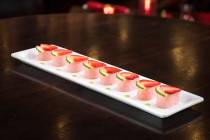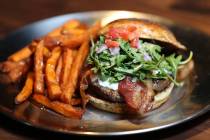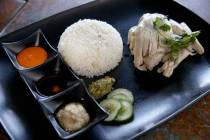Max’s Restaurant mixes Filipino, American influences
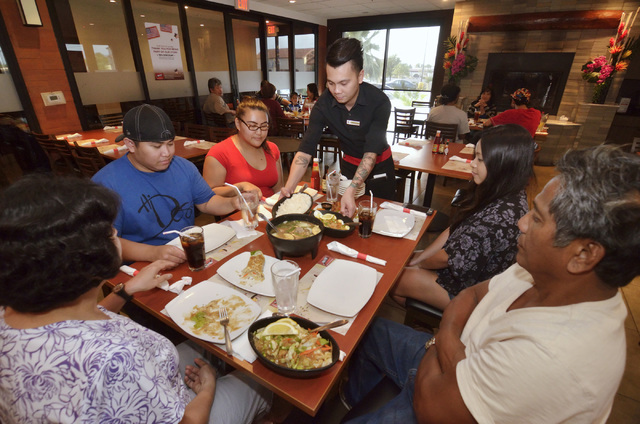
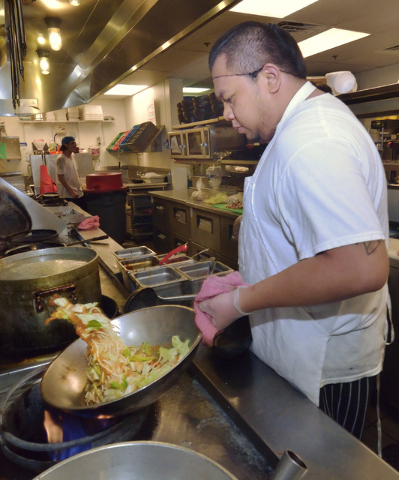
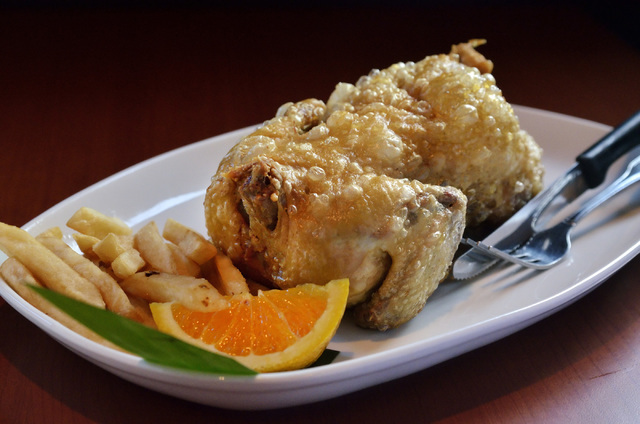
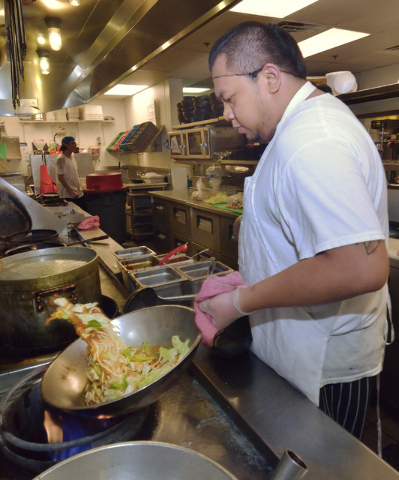

“The house that fried chicken built,” Max’s Restaurant calls itself, and fair enough.
Max’s, which uses the subtext “Cuisine of the Philippines,” reportedly got its start in that country’s Quezon City in 1945, catering to American GIs with steaks and drinks and especially the family recipe fried chicken, still served today in its restaurants in the Philippines and across North America.
And it’s really good fried chicken ($9.99 for a half or $14.99 for a whole), the crisp crust devolving into golden shards and yielding to supermoist meat within. It’s also pretty bland by today’s standards — Americans liked everything a lot plainer in 1945 — but that’s remedied easily enough with a mixture of banana ketchup, Worcestershire and hot sauce, suggested on the menu and available on the table. With it: some really good, slightly crunchy sweet-potato fries, which seemed to come with it but turned out costing extra ($2.50).
Not all Filipino dishes translate readily to the American palate, but one that does is the eggroll-like lumpiang, offered in two variations on Max’s menu. The idea of trying both was dashed when the server said there’d be about 16 of them — although he said they were small, which they were — so sticking to the lumpiang Shanghai ($8.99) seemed the way to go. And they were excellent, testament to the cravings expatriates are known to get. The extra-crunchy wrappers enfolded a mixture of ground pork and vegetables, and the sweet-and-sour sauce on the side provided an extra jot of flavor that wasn’t even needed. They were served in a sort of bowl made from a fried lumpiang wrapper, a novel touch.
A dish that turned out to not so readily translate to the American palate was the kare kare ($13.99 for regular or $22.99 for large), which was a beef-peanut stew that sounded a whole lot better than it turned out to be. We expected the beef shank and oxtail to be bony, and they were, but the “thick peanut sauce” was devoid of peanut flavor and actually had a sort of watery taste, although it wasn’t overly thin. A passing employee urged us to jazz it up with the shrimp paste that was served with it, and that’s an acquired taste if ever there was one. The menu said this was a house specialty and “a native delicacy,” but next time we’ll stick to pancit.
Service throughout was fine, questions immediately answered and information offered whenever we seemed even slightly doubtful. It’s also a pleasant place, a former chain steakhouse with an open, airy look, sleek and comfortable.
In the final analysis, how much you’ll enjoy Max’s Restaurant pretty much depends on how familiar you are with Filipino food. But as far as the fried chicken goes, all those GIs were on the right track.
Las Vegas Review-Journal restaurant reviews are done anonymously at Review-Journal expense. Email Heidi Knapp Rinella at hrinella@reviewjournal.com. Find more of her stories at www.reviewjournal.com and follow @HKRinella on Twitter.
Review
Max’s Restaurant, 1290 E. Flamingo Road (at Maryland Parkway); 702-433-4554
The essence: Very good (if slightly bland) fried chicken and excellent lumpiang, although the beef-peanut stew with shrimp paste apparently is an acquired taste.










